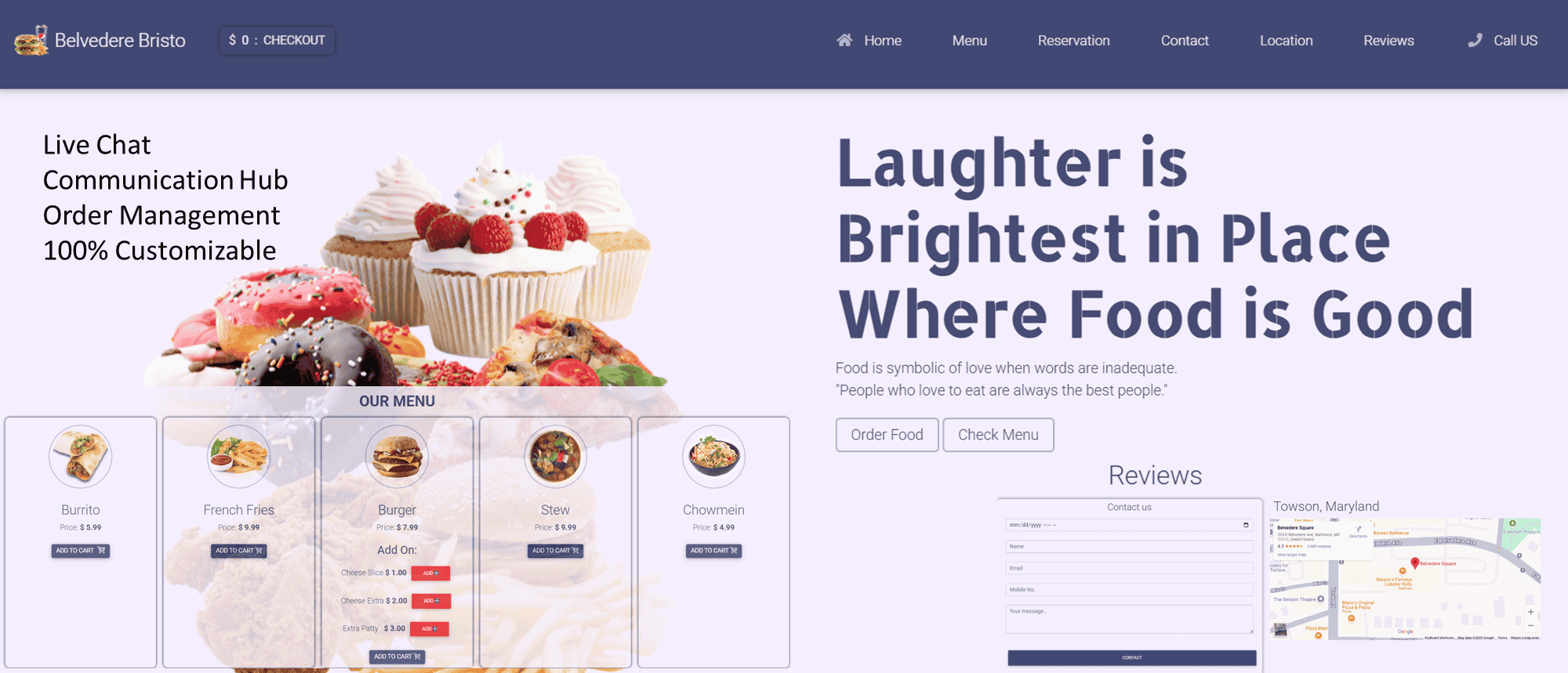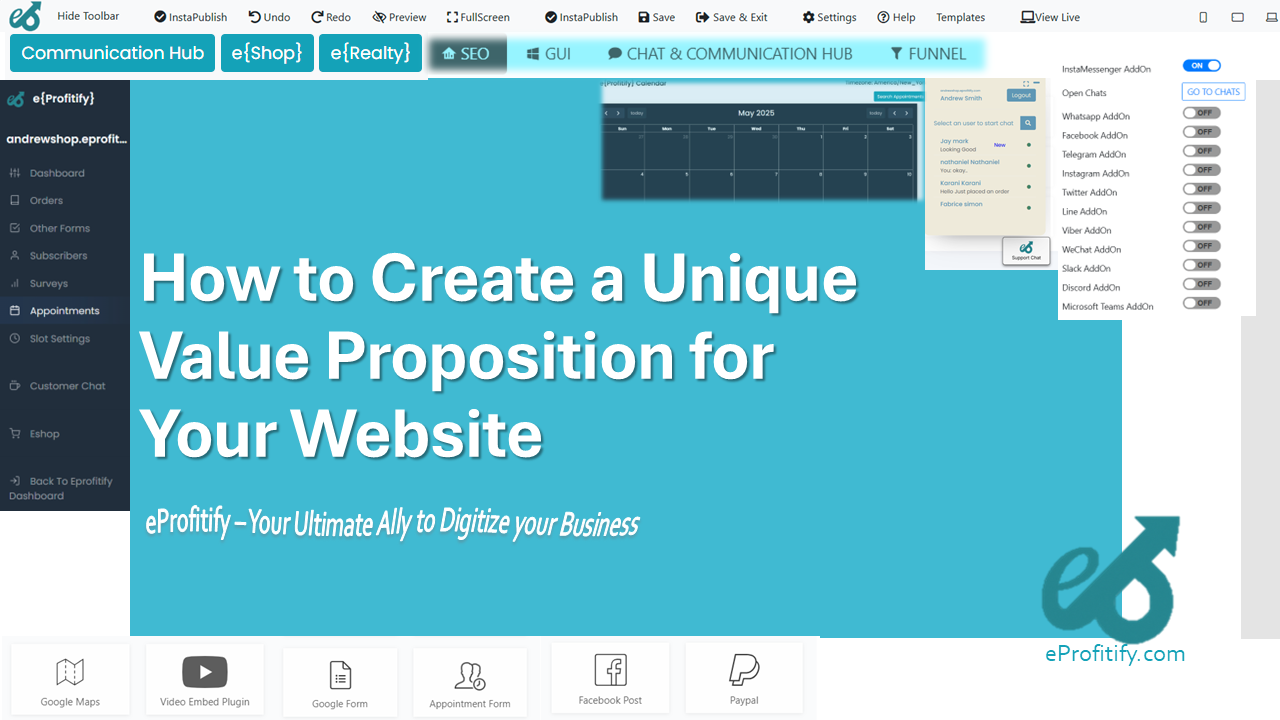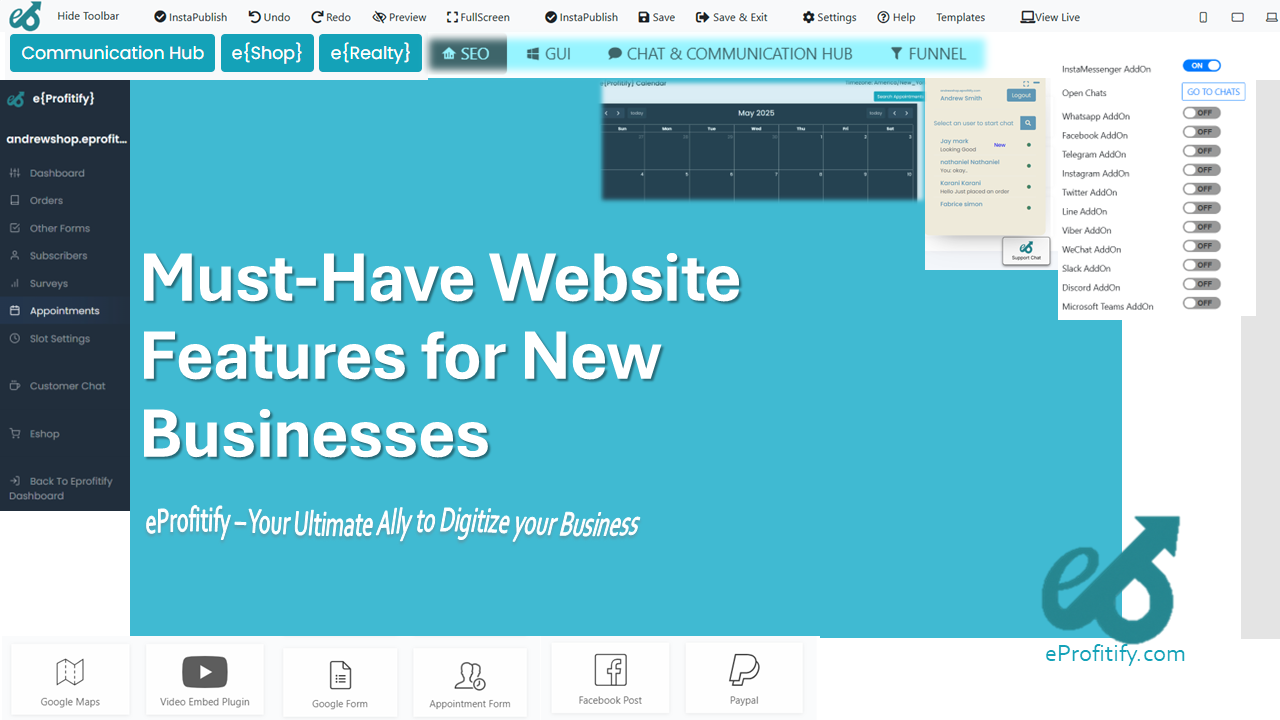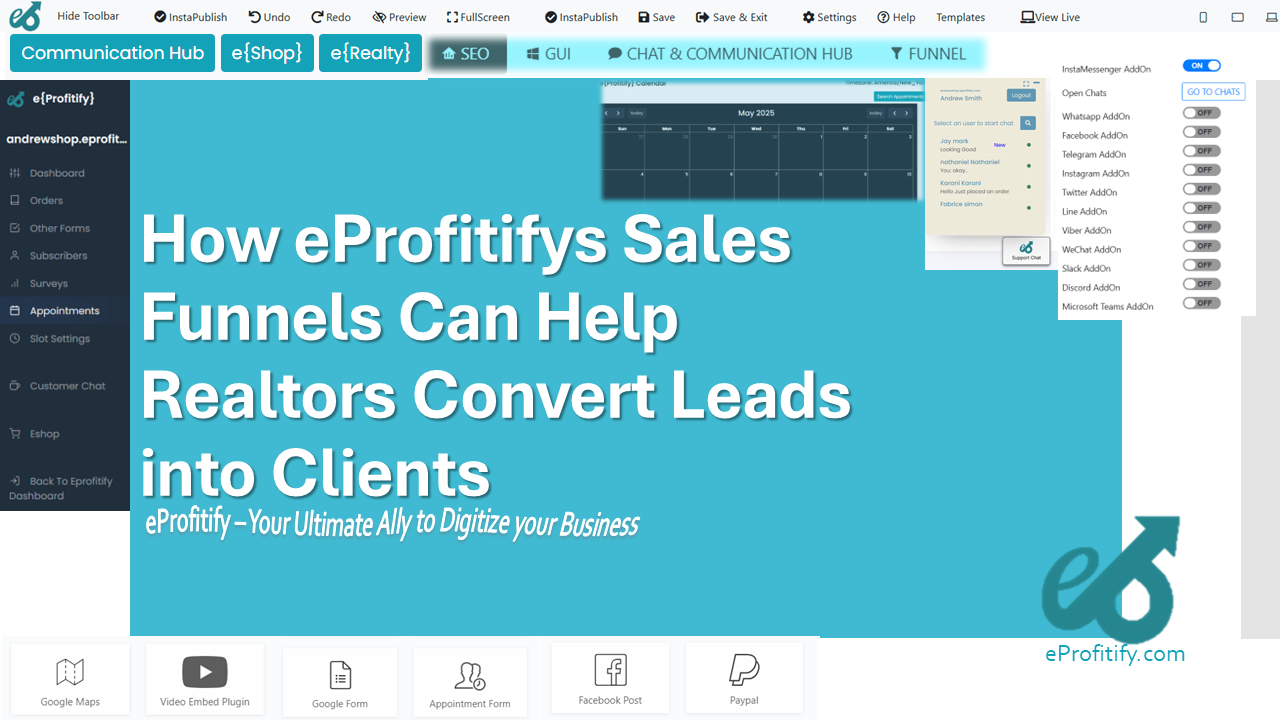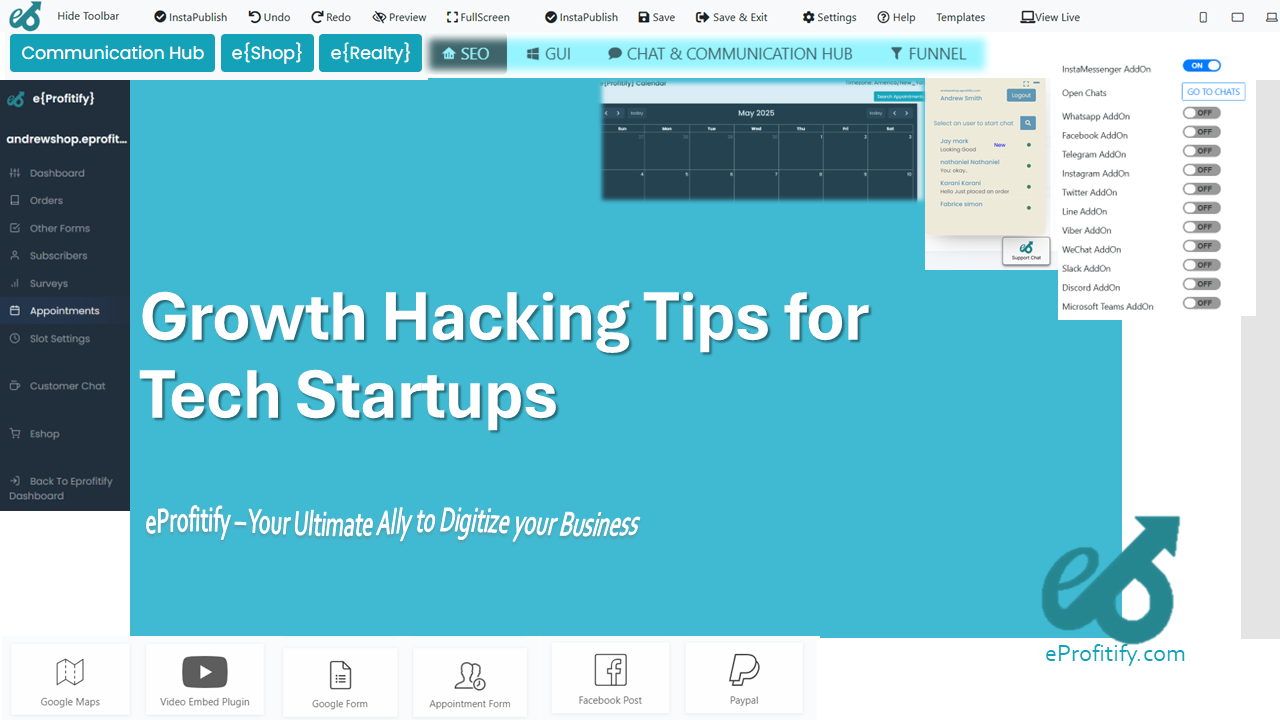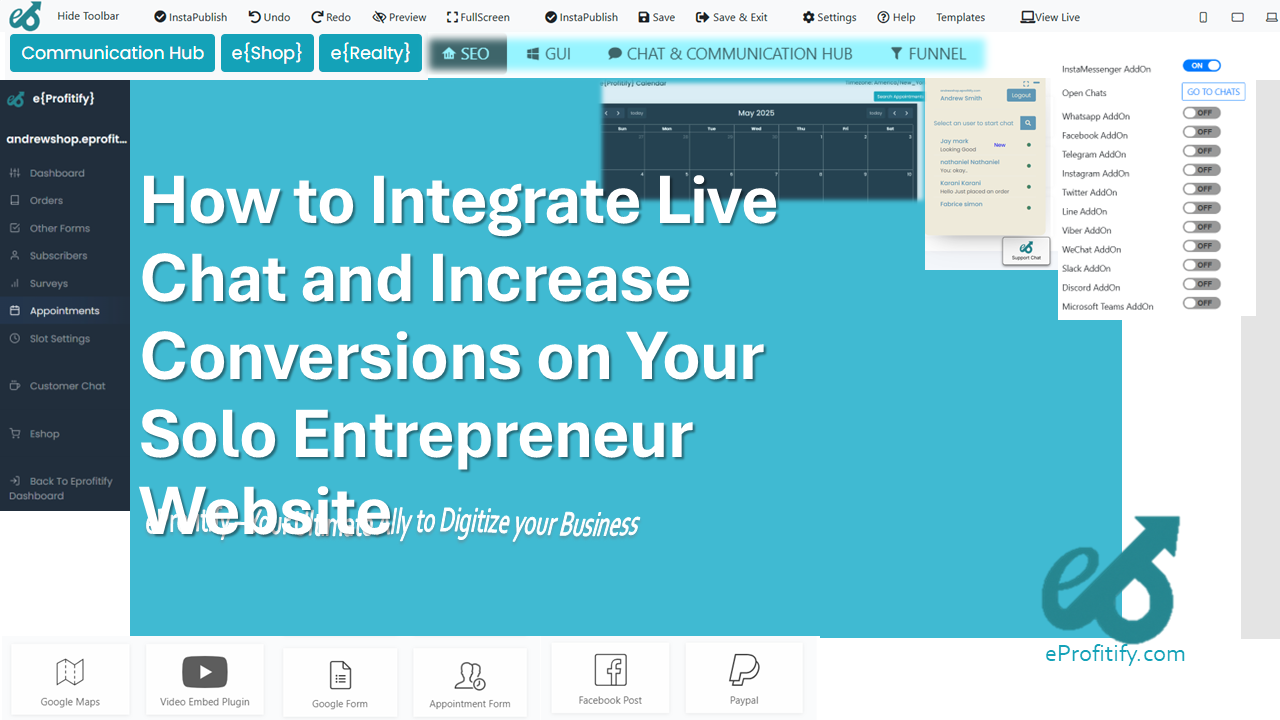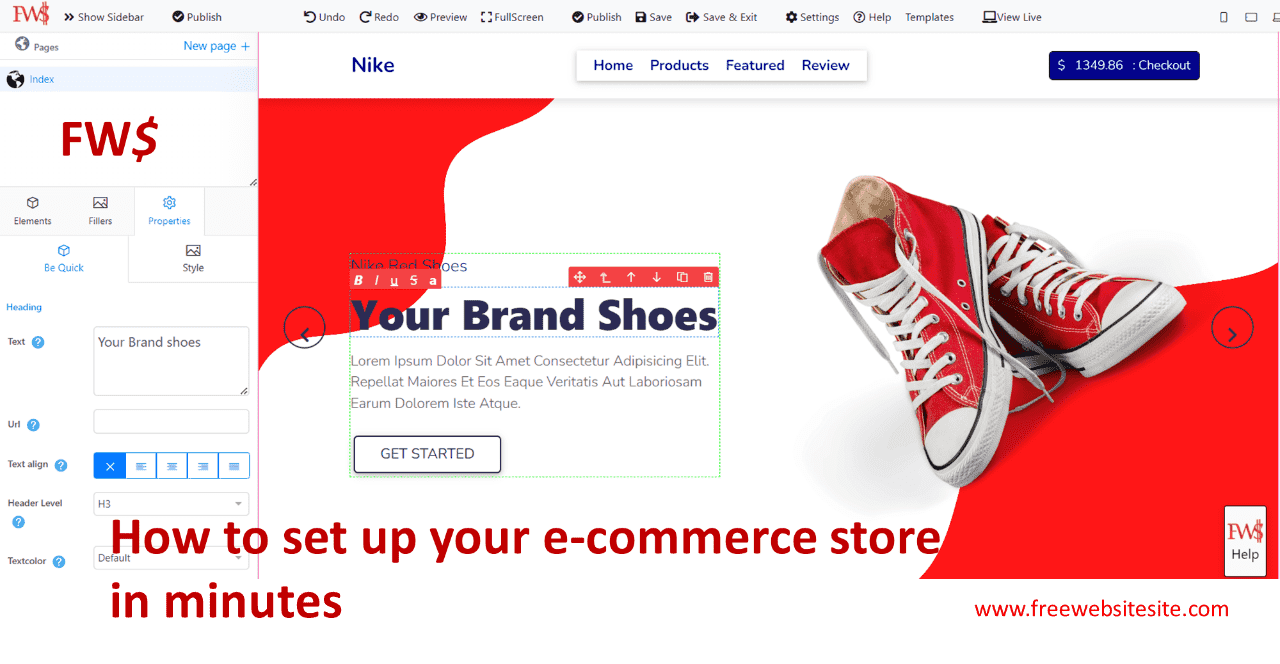How to Track Conversions and Sales from Your Website
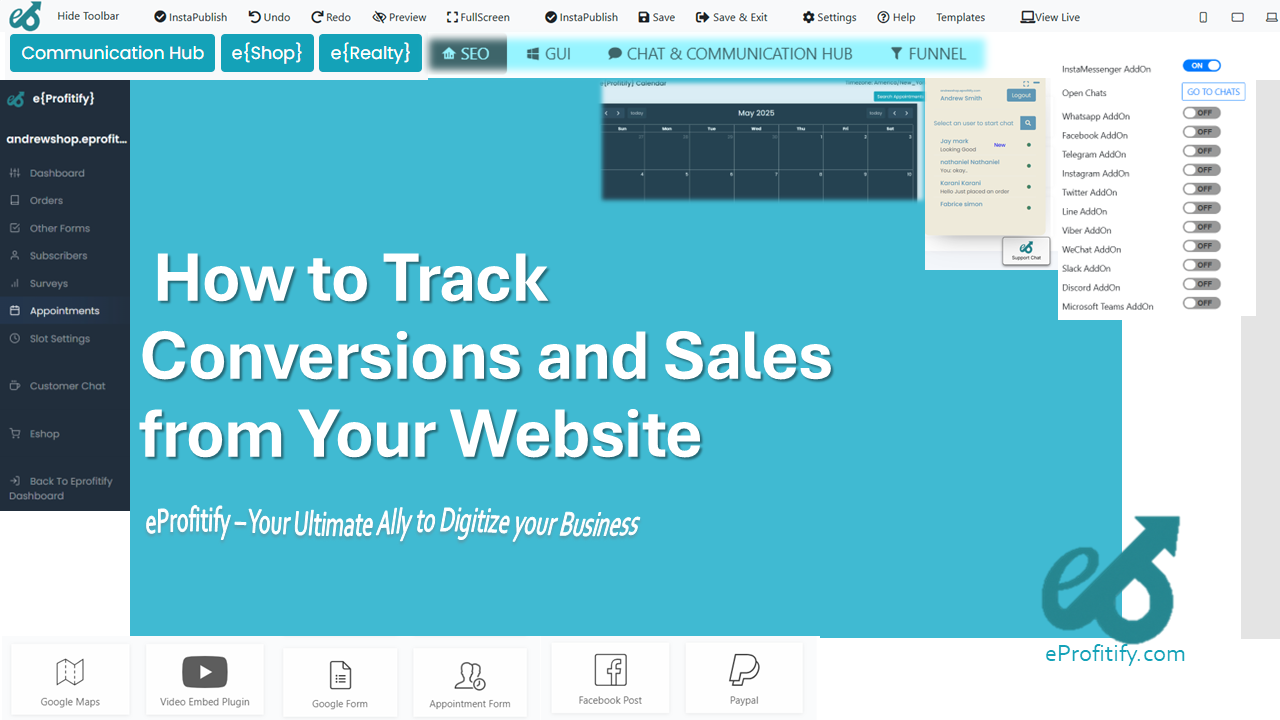
How to Track Conversions and Sales from Your Website
Tracking conversions and sales is critical for understanding your website’s ROI, optimizing marketing strategies, and driving business growth. Yet, a 2023 Statista study reveals that 48% of small businesses still don’t use analytics tools, leading to missed opportunities and wasted resources. This guide outlines actionable steps to track conversions effectively, supported by statistics, and highlights how eProfitify—a leading website management platform—simplifies this process with its integrated toolkit.
What is Conversion Tracking?
Conversion tracking involves monitoring user actions that align with business goals, such as purchases, form submissions, or newsletter sign-ups. The average global ecommerce conversion rate is 2-3% (SaleCycle, 2023), but this varies by industry. For example, luxury goods may see lower rates, while SaaS platforms often achieve higher ones. Tracking these metrics helps identify what’s working and empowers data-driven decisions.
Essential Tools for Tracking Conversions
1. Google Analytics 4 (GA4)
GA4 is a free, versatile tool for measuring traffic, user behavior, and conversions. Key steps include:
- Setting Up Event Tracking: Monitor actions like button clicks or video views.
- Ecommerce Tracking: Integrate with platforms like Shopify to track sales, revenue, and product performance.
- Goal Configuration: Define goals for leads, downloads, or sign-ups.
While GA4 is powerful, pairing it with eProfitify enhances functionality. eProfitify’s seamless integration with analytics tools provides centralized dashboards, combining data from CRM, ecommerce, and marketing campaigns for holistic insights.
Stat: Over 55% of websites use Google Analytics, making it the most adopted analytics tool (W3Techs, 2023).
2. UTM Parameters
UTM tags track campaign performance by appending codes to URLs (e.g., utm_source=facebook). This clarifies which channels drive traffic, enabling precise budget allocation.
Best Practices:
- Use consistent naming conventions.
- Limit parameters to avoid clutter.
- Tools like Google’s Campaign URL Builder simplify UTM creation.
Stat: Properly tagged campaigns improve tracking accuracy by up to 40% (Optimizely).
3. Heatmaps and Session Recordings
Tools like Hotjar visualize user behavior through heatmaps (showing click hotspots) and session recordings (replaying visits). Identifying where users drop off helps optimize pages.
Stat: Heatmap analysis can increase conversions by 20% by revealing design flaws (Hotjar).
4. A/B Testing Tools
Platforms like Optimizely or VWO let you test webpage variations to determine which drives more conversions.
Stat: Businesses using A/B testing report up to 300% higher conversion rates in targeted campaigns (VWO).
5. CRM Integration
CRMs like HubSpot or Salesforce track customer interactions post-conversion, nurturing leads into loyal customers.
Stat: Companies using CRMs see a 29% increase in sales and 34% higher customer retention (Salesforce).
eProfitify’s Edge: Its built-in CRM centralizes lead management, automatically logging interactions from emails, chats, and appointments, streamlining follow-ups.
eProfitify: The All-in-One Solution
eProfitify stands out as a comprehensive platform combining essential tools for conversion tracking and business growth:
- Instant Messaging: Engage visitors in real-time, resolving queries that could otherwise lead to cart abandonment.
- Appointment Management: Reduce friction with automated scheduling linked to calendars.
- Ecommerce Integration: Track sales, manage inventory, and analyze product performance seamlessly.
- CRM: Automate lead scoring, segment audiences, and trigger personalized campaigns.
Stat: Users report a 35% improvement in conversion tracking efficiency by consolidating tools within eProfitify.
Advanced Conversion Strategies
1. Customer Journey Analysis
Map every touchpoint from discovery to purchase. Multi-touch attribution models (e.g., time-decay or positional) reveal which channels contribute most.
Stat: 54% of marketers say attribution modeling improves ROI (Nielsen).
2. Retargeting Campaigns
Retarget visitors who didn’t convert initially. Platforms like Facebook Ads or Google Display Network can re-engage them.
Stat: Retargeting boosts conversion rates by 150% compared to generic ads (Criteo).
3. Customer Lifetime Value (CLV)
Prioritize high-value customers by calculating CLV. eProfitify’s analytics identify trends in repeat purchases and engagement.
Implementation Steps
- Audit: Review existing analytics setup for gaps.
- Choose Tools: Opt for integrated solutions like eProfitify to unify data.
- Set Up Tracking: Install codes, configure goals, and tag URLs.
- Test: Ensure tracking accuracy with tools like Google Tag Assistant.
- Analyze & Optimize: Regularly review metrics and refine strategies.
Case Study: Boosting Conversions with eProfitify
A boutique fitness studio implemented eProfitify’s appointment management and CRM tools:
- 40% reduction in no-shows via automated reminders.
- 25% increase in membership sign-ups through personalized retargeting.
- Unified dashboards provided insights cutting analysis time by 50%.
Conclusion
Tracking conversions and sales is non-negotiable in today’s digital landscape. By leveraging tools like GA4, UTM parameters, and CRMs—and adopting platforms like eProfitify—businesses gain actionable insights while streamlining operations. With features spanning instant messaging, ecommerce, and analytics, eProfitify empowers companies to optimize every interaction, driving measurable growth. Start refining your strategy today to unlock your website’s full potential.


